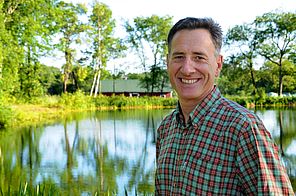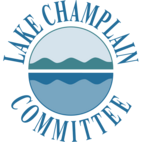Governor Peter Shumlin’s response to Lake Champlain Questions

In fall 2010, prior to elections, the Lake Champlain Committee posed eight questions to major party candidates for Governor of Vermont. Here are Governor Peter Shumlin's responses.
1. What efforts would you champion to protect and restore Lake Champlain and the rest of Vermont’s waters?
I would continue to enhance efforts already underway in Clean and Clear with the goal of eliminating Lake Champlain’s impairment due to excessive phosphorus pollution as soon as possible. We would continue to work with regional groups such as the Friends of Northern Lake Champlain and the South Lake Champlain Group as well as statewide organizations including the LCC and the LCCC to achieve that goal.
One of my first priorities if elected will be to convene all who are concerned with LC to discuss whether it might be possible to resolve or at least narrow differences on the myriad issues that in recent years have grown out of the impairment of Lake Champlain and its tributaries. (Revising the Lake Champlain Clean up Plan, implementing the clean up plans for our 16 stormwater-impaired watersheds, adopting rules implementing policies designed to prevent water quality degradation, the revocation of EPA’s delegation of its permit authority to the State of Vermont, etc.)
There are many substantive issues relating to the water quality management of Vermont’s waters — including Lake Champlain — that are unresolved and will potentially lead to endless litigation. Without strong leadership and vision our efforts to make progress will continue to be frustrated by disagreements as to how to proceed. We can and must do better for the sake of all concerned. We need to provide greater regulatory certainty and predictability and we need to do a better job of managing water quality generally and Vermont’s environmental crown jewel, Lake Champlain, specifically. Vermont will not be successful marketing the Vermont Brand while Lake Champlain remains impaired.
I have some more specific ideas about how to approach agricultural runoff challenge discussed in the response to question 5 below.
2. There are 16 stormwater-impaired streams in Vermont. What would your Administration do to address the challenges posed by them?
The first thing my Administration would do is insure that Vermont is not adding to its list of stormwater-impaired watersheds. We know of 16 currently but we may have been creating even more over the past several years. We need to take a thoughtful look at how to learn our lessons and ensure that additional watersheds do not become impaired thereby triggering the need for costly clean-up plans and the associated risks, higher costs and greater regulatory uncertainty this creates. We need to do all we can to reduce new pollution in the first place.
In terms of the 16 impaired watersheds my Administration would work collaboratively with affected municipalities and individuals to build a consensus on how to move forward, consistent with applicable state and federal law. This is a central part of the broader effort discussed in my response to question 1 above.
3. Homeowners and businesses can do a lot to reduce stormwater impacts from their properties such as adding rooftop gardens, using porous or perforated pavement instead of asphalt for driveways and parking lots, and installing rain barrels to catch stormwater flow. However, some voluntary stormwater control measures can be quite costly. Would you support a program of state tax incentives, analogous to those available for implementing energy-saving measures, for homeowners and businesses who install stormwater controls beyond permit requirements?
My Administration would consider such an approach as part of a more global effort to forge a consensus on cleaning up Lake Champlain and its tributaries as discussed in paragraph 1 above.
4. Increasing recreational use of Lake Champlain has led to conflicts between neighbors and those planning dock expansions in Colchester and Ferrisburgh. There is currently no state policy to guide decisions about when expansions impinge on the public resource. How would your Administration go about addressing these conflicts?
The recreational use disputes referred to should be addressed in a manner consistent with existing Vermont law and associated legal precedents. If that does not address the issue or if it produces an unacceptable result, my Administration would see this as an important issue to resolve.
5. Agriculture is an important part of Vermont’s landscape but dairy farming creates inevitable conflicts with water quality protection efforts. Challenges include manure storage, transport and disposal; erosion associated with annually tilled lands; and direct access of livestock to the state’s waterways. What steps would your Administration take to balance conflicts between dairy farming and water quality protection?
My Administration would be proactive regarding helping farmers address agricultural pollution BUT we would do so in partnership with Vermont’s farmers. My model would be the efforts of the Farmers Watershed Alliance. I am convinced that virtually all Vermont farmers want to do the right thing in terms of water quality and sound farming practices. The challenge is how to make the needed investments affordable to farmers in a bad economy and enlist them as willing partners in achieving this goal. As Roger Rainville of the Farmer’s Watershed Alliance has said, “ Give a farmer $100 and some flexibility and he/she will give back $200 worth of clean up.” I believe that! As one way of doing this, my Administration would seek a federal waiver which would allow all federal programs assisting farmers with these issues to relax the often stifling federal mandates and matching requirements. This would create incentives for farmers to partner on the important goal of cleaning up Lake Champlain and it would allow us to use limited resources to maximum benefit. This was successfully done in a different context with a waiver on Medicare, which as saved both the federal government, and the State of Vermont millions of dollars.
6. A 2009 report by the American Society of Civil Engineers identified a need for infrastructure upgrades in Vermont amounting to $395 million for drinking water and $167 million for wastewater. In recent years failed pipes have resulted in raw sewage spills in Swanton, Burlington, and St. Johnsbury; failures in sewage pump stations occur regularly in towns around the state. What would your Administration do to address unmet water quality infrastructure needs throughout Vermont?
All the federal money for these sort of projects has dried up. Vermont is not alone. I will work with our congressional delegation to leverage what money we can for cleaning up our waterways. We can use the federal dollars to match commitments from our communities One thing worth considering would be special bond issues to get the state and community match.
7. New York State recently passed legislation banning the application of phosphorus from established lawns unless a soil test indicates it is necessary. The Legislation was identified as a “next step” in the revised TMDL implementation plan. Would your Administration support similar legislation in Vermont and would you task Agency of Natural Resources personnel with drafting a bill?
My Administration would certainly consider this approach again as part of a broader discussion of how to move the ball forward as discussed in paragraph 1 above.
8. The Lake Champlain Committee has produced a <link get-involved protection-pledge _blank blocked::http: www.lakechamplaincommittee.org>Lake Protection Pledge outlining steps individuals can take to reduce their personal impact on water quality. The pledge has been taken by thousands of individuals including Governor Douglas and Champ and it’s also promoted by the Agency of NaturalResources through the Clean and Clear program. Would you take the pledge and encourage citizens to do the same as a way of fostering personal action to protect lake health?
I will be happy to take the pledge.
